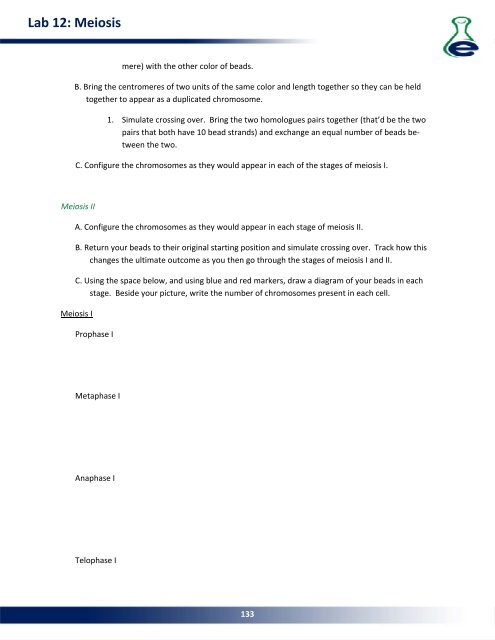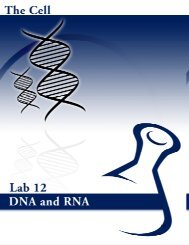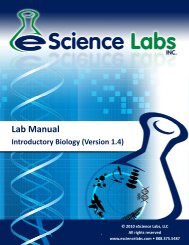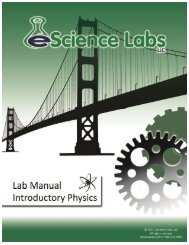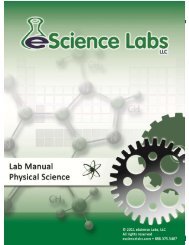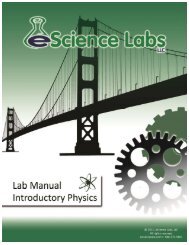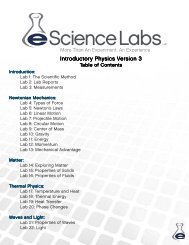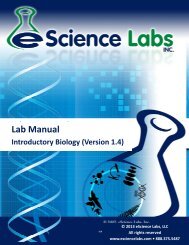Lab 15: Population Genetics - eScience Labs
Lab 15: Population Genetics - eScience Labs
Lab 15: Population Genetics - eScience Labs
You also want an ePaper? Increase the reach of your titles
YUMPU automatically turns print PDFs into web optimized ePapers that Google loves.
<strong>Lab</strong> 12: Meiosis<br />
mere) with the other color of beads.<br />
B. Bring the centromeres of two units of the same color and length together so they can be held<br />
together to appear as a duplicated chromosome.<br />
1. Simulate crossing over. Bring the two homologues pairs together (that’d be the two<br />
pairs that both have 10 bead strands) and exchange an equal number of beads between<br />
the two.<br />
C. Configure the chromosomes as they would appear in each of the stages of meiosis I.<br />
Meiosis II<br />
A. Configure the chromosomes as they would appear in each stage of meiosis II.<br />
B. Return your beads to their original starting position and simulate crossing over. Track how this<br />
changes the ultimate outcome as you then go through the stages of meiosis I and II.<br />
C. Using the space below, and using blue and red markers, draw a diagram of your beads in each<br />
stage. Beside your picture, write the number of chromosomes present in each cell.<br />
Meiosis I<br />
Prophase I<br />
Metaphase I<br />
Anaphase I<br />
Telophase I<br />
133


